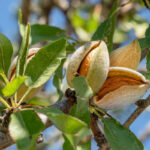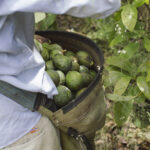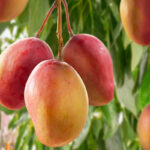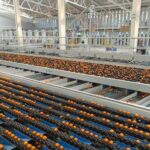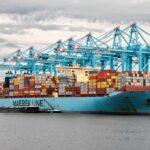Latin America’s fresh produce exports unscathed by Covid-19

News of food dumping and farmworker shortages in March spread panic around the world about an imminent food security crisis. But that crisis never happened. The global supply chains carrying food around the world adapted quickly to absorb the disruption.
That’s because those supply chains developed resilience to the complexities of a demanding global market. Long before the pandemic.
“They have really come to manage uncertainty well,” said Penny Bamber, a Chile-based consultant and Duke Global Value Center affiliate who, along with her Duke alumna colleague Karina Fernandez-Stark, spoke at an event organized by the Duke Center for International and Global Studies (DUCIGS).
Bamber and Fernandez-Stark have conducted research across the world and consulted for international organizations including the World Bank.
They found that during the Covid-19 crisis, Latin American countries (LAC) – a region which represents the world’s largest, extra-regional trader of fresh produce – were able to protect their exports and, in a few cases, even increase their fresh produce shipments.
Such resilience, they explained, is a byproduct of a whole industry having adapted—before COVID—to the complexities of a demanding global market. “They have really come to manage uncertainty well,” Bamber said.
International firms developed skills to cope with traditional shocks affecting food supply chains such as weather, diseases, and natural disasters. They have also vertically integrated their production, she added, which “allowed these companies to have full control, full flexibility within their supply chain.”
The second element is geographical and product diversification. “You have to supply from a large number of places around the world,” she continued. “So they [expanded] their sourcing operations into new countries.”
This way, they had a heads-up from the first regions hit by the virus and were able to adapt their production elsewhere. Product diversification, on the other hand, set them up to respond to changing consumer demands under COVID.
Finally, Bamber concluded, what is “quite surprising is the degree of automation that's already happening amongst the Latin American suppliers.” Having fewer workers in large factories helped comply with the COVID restrictions.
The Latin American labor market also contributed. “What has been [quite] different than in the U.S. and Europe,” Karina Fernandez-Stark remarked, “is that Latin America relied on their own labor. The U.S. relies [more] on immigrants: they closed the borders, and workers couldn’t enter.”
Even in Chile—the Latin American country with the highest number of immigrant laborers—” the majority of them live in the country. So that was not a problem.” “In the packing plants, what really changed is that they started operating 24 hours [a day], organizing in shifts,” Fernandez-Stark also added.
Both speakers also pointed out that before the pandemic, the whole Latin American region pushed agricultural production towards high-value products (cherries, figs, berries, as opposed to low-margin ones like apples): yet another factor that allowed them to make the most out of the pandemic response.
Speaking further on the resilience of fresh produce exports from Latin America over recnet months, Fernandez-Stark said: “...the sector exports from the region just dropped 1 percent compared to other sectors like tourism that dropped 70 percent or certain manufacturing products that dropped 50%.
"But, in general, the decline in total goods export was 15 percent. [A 1 percent decline thus, was] not bad for the region and they were very quick to adapt in their supply chain."
And speaking on how Latin American agricultural firms have adapted during the pandemic, Bamber said: “These agro-industrial companies are a combination of both domestic and foreign firms...So we have this mix of strong domestic, strong northern foreign direct investment and strong southern foreign direct investment which has created a great culture for capability development.
"So as the region has worked and competed in the sector, it has become a world class supplier and these firms have become used to operating in a demanding sector... the demand is driven by countries such as the US, Europe....Those markets are dominated by large supermarkets, which have very strict standards.
"So, in order to be able to compete and supply that region, these companies have had to develop a lot of skills, whether it's weather, disease, natural disasters that are affecting the supply chain. They've come to manage uncertainty well”.
The webinar was the fifth in the DUCIGS/Rethinking Diplomacy Program: “COVID-19 and Global Supply Chain Series," supported by the Josiah Charles Trent Memorial Foundation Endowment Fund. For articles and videos of the first four installments, click here.
















